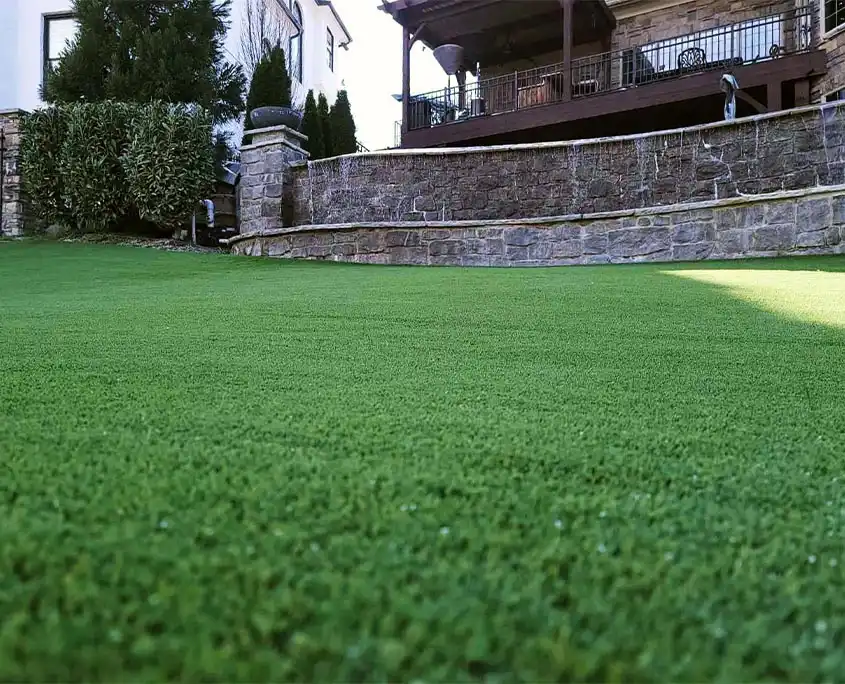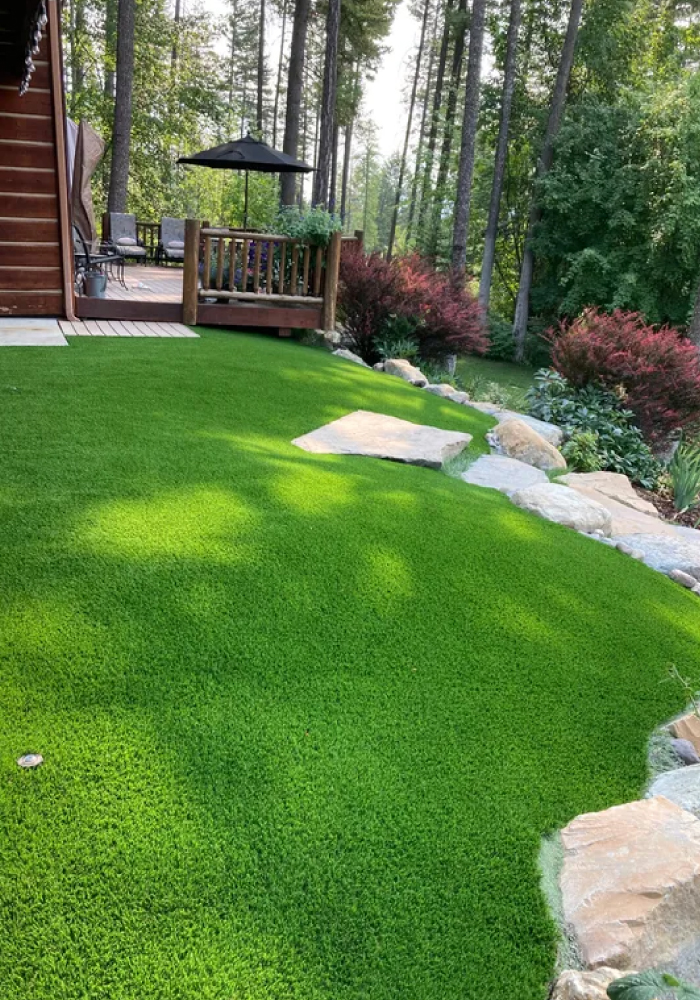Eco-Friendly Arizona Artificial Turf for a All-Season Lush Green Lawn
Eco-Friendly Arizona Artificial Turf for a All-Season Lush Green Lawn
Blog Article
Look Into the Environmental Perks of Opting for Artificial Turf Solutions
The adoption of fabricated grass services presents an engaging possibility to resolve pushing environmental challenges. By dramatically minimizing water usage and reducing the application of hazardous chemicals, these alternatives not only promote sustainable landscaping but additionally shield local environments. Furthermore, the lower carbon impact related to decreased maintenance tasks adds to an extra sustainable strategy to land monitoring. Nevertheless, the ramifications of these benefits expand past mere conservation initiatives, raising inquiries about their lasting effect on habitat conservation and general environmental balance. Checking out these measurements exposes an intricate interplay worth taking into consideration.
Water Conservation Perks
One of the most significant benefits of artificial turf is its capacity to preserve water. In contrast, man-made grass does not need watering, substantially reducing the overall need for water resources.
By eliminating the demand for routine watering, artificial lawn adds to sustainable landscape techniques and assists minimize the environmental effect of excessive water usage. The conservation of water expands to the decrease of runoff, which can lead to soil erosion and waterway contamination.
Additionally, the installment of fabricated lawn allows home owners and towns to designate water sources extra efficiently, concentrating on essential uses such as drinking water and agriculture. The change in the direction of synthetic grass not only advertises accountable water use but also straightens with wider ecological objectives focused on maintaining natural deposits.
As neighborhoods increasingly focus on sustainability, the water conservation advantages of fabricated turf provide a compelling case for its adoption in property and commercial landscaping projects.
Decreased Chemical Usage
The shift to synthetic grass substantially lowers the reliance on chemical therapies typically utilized in all-natural lawn upkeep. Conventional grass administration usually entails the application of fertilizers, herbicides, and chemicals to promote development and control parasites. These chemicals can present threats to human health and wellness, local wildlife, and the setting, adding to dirt and water contamination.
In comparison, synthetic grass eliminates the demand for these dangerous substances. When set up, it calls for marginal maintenance, mainly including routine cleansing and seldom infill replenishment. This reduction in chemical usage not just benefits the immediate atmosphere however also adds to broader ecological stability. By reducing the launch of synthetic compounds into the ecological community, synthetic grass promotes healthier dirt and water systems.
In addition, the absence of chemical runoff linked with synthetic grass installments helps shield neighborhood rivers from contamination, supporting water life and maintaining biodiversity. Artificial turf companies phoenix. As areas progressively focus on lasting practices, choosing synthetic grass provides a practical service that aligns with ecological preservation goals. Via this shift, building proprietors can take pleasure in lush eco-friendly areas without jeopardizing environmental wellness, leading the way for a much more lasting future
Lower Carbon Impact

In addition, the setup of man-made lawn can lead to substantial water conservation. Natural grass call for significant amounts of water for watering, which not just contributes to the carbon footprint related to water extraction and therapy but additionally stress local water resources. In comparison, artificial lawn needs minimal upkeep, calling for no watering, therefore substantially see page decreasing water use and its associated energy prices.
In addition, the long life of synthetic grass adds to its lower carbon effect. With a life expectancy of approximately 15 years or even more, the requirement for constant substitutes is lessened, resulting in much less waste and lower power intake in manufacturing and getting rid of traditional yard choices. On the whole, man-made lawn offers a lasting option for eco aware landscaping.
Habitat Conservation
Habitat preservation is an important factor to consider in the argument over landscape design options, particularly when comparing synthetic lawn to natural grass. All-natural turf lawns typically need substantial upkeep, including using fertilizers, herbicides, and pesticides, which can negatively impact local ecological communities. These chemicals can seep into the soil and waterways, damaging indigenous plants and animals and interrupting neighborhood habitats.
In comparison, synthetic lawn provides a chance to lower the ecological impact of landscape design. By selecting artificial turf, house owners can lessen the interruption of natural habitats related to conventional yard treatment methods. Synthetic grass eliminates the requirement for dangerous chemicals, consequently securing close-by wild animals and maintaining the stability of surrounding environments. The installment of synthetic turf can lead to the conversion of previous lawn locations right into more biodiverse landscapes, such as pollinator yards or indigenous plant areas, which can sustain regional wild animals.
Eventually, the change to synthetic turf not only conserves water and decreases upkeep initiatives but likewise fosters a more unified relationship in between human activities and the natural surroundings, promoting environment conservation at the same time.
Long-Term Sustainability
Long-lasting sustainability is a critical factor in reviewing the benefits of man-made lawn over conventional grass lawns. you can check here Among the most significant advantages of synthetic lawn is its longevity; it can last up to 15-20 years with marginal upkeep, whereas natural lawn requires regular reseeding and replacement. This longevity lowers the need for consistent resources, such as water, plant foods, and chemicals, which are necessary for keeping a healthy and balanced grass lawn.
In addition, man-made grass adds to a reduction in carbon emissions related to lawn treatment tools. Typical yards commonly need gas-powered mowers, trimmers, and blowers, every one of which add to air contamination. Artificial turf companies phoenix. In contrast, fabricated turf removes the requirement for such devices, promoting a cleaner setting
Furthermore, the manufacturing of synthetic grass increasingly makes use of recycled materials, enhancing its sustainability account. As manufacturers embrace environment-friendly methods, the ecological footprint of synthetic grass remains to decrease.

Verdict
The fostering of synthetic grass remedies presents substantial environmental advantages, including significant water conservation, minimized reliance on dangerous chemicals, and a reduced carbon impact. Man-made turf help in maintaining all-natural habitats by decreasing land disruption and advertising lasting sustainability with the use of durable products. Collectively, these elements highlight the possibility of man-made grass to contribute favorably to ecological health and provide a sensible alternative to conventional landscape design techniques in a significantly resource-conscious world.
In contrast, synthetic turf does not require watering, significantly lowering the total need for water sources. By decreasing the release of synthetic compounds into the ecosystem, fabricated grass promotes much healthier soil and water systems.
Moreover, the setup of fabricated navigate here grass can result in considerable water preservation. In contrast, fabricated lawn needs very little upkeep, requiring no watering, consequently substantially minimizing water usage and its connected energy expenses.

Report this page